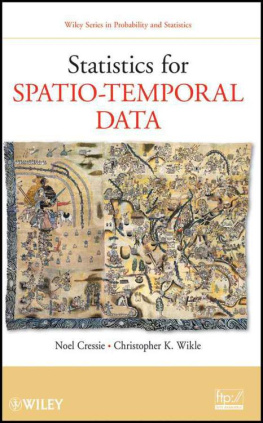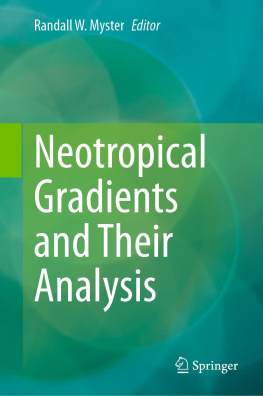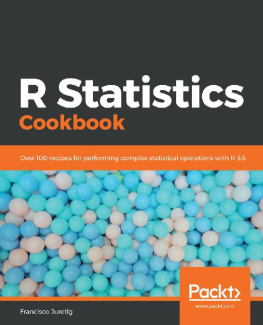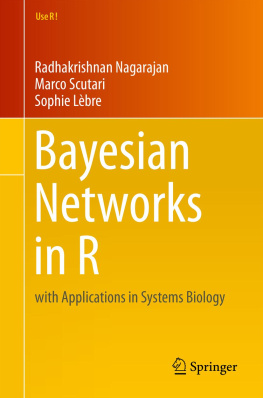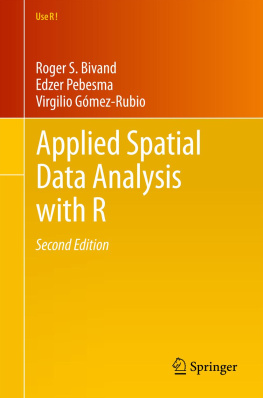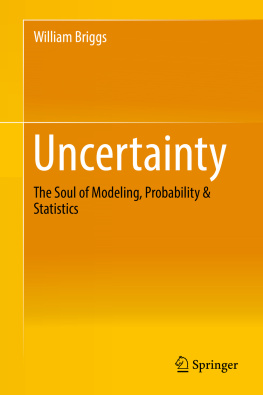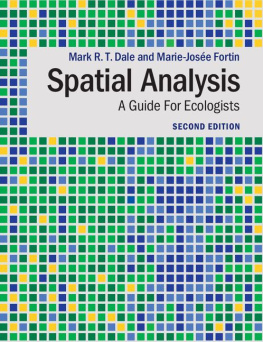CONTENTS
WILEY SERIES IN PROBABILITY AND STATISTICS
Established by WALTER A. SHEWHART and SAMUEL S. WILKS
Editors: David J. Balding, Noel A. C. Cressie, Garrett M. Fitzmaurice, Harvey Goldstein, Iain M. Johnstone, Geert Molenberghs, David W. Scott, Adrian F. M. Smith, Ruey S. Tsay, Sanford Weisberg
Editors Emeriti: Vic Barnett, J. Stuart Hunter, Jozef L. Teugels
A complete list of the titles in this series appears at the end of this volume.
Copyright 2011 by John Wiley & Sons, Inc. All rights reserved
Published by John Wiley & Sons, Inc., Hoboken, New Jersey
Published simultaneously in Canada
No part of this publication may be reproduced, stored in a retrieval system, or transmitted in any form or by any means, electronic, mechanical, photocopying, recording, scanning, or otherwise, except as permitted under Section 107 or 108 of the 1976 United States Copyright Act, without either the prior written permission of the Publisher, or authorization through payment of the appropriate per-copy fee to the Copyright Clearance Center, Inc., 222 Rosewood Drive, Danvers, MA 01923, (978) 750-8400, fax (978) 750-4470, or on the web at www.copyright.com. Requests to the Publisher for permission should be addressed to the Permissions Department, John Wiley & Sons, Inc., 111 River Street, Hoboken, NJ 07030, (201) 748-6011, fax (201) 748-6008, or online at http://www.wiley.com/go/permission.
Limit of Liability/Disclaimer of Warranty: While the publisher and authors have used their best efforts in preparing this book, they make no representations or warranties with respect to the accuracy or completeness of the contents of this book and specifically disclaim any implied warranties of merchantability or fitness for a particular purpose. No warranty may be created or extended by sales representatives or written sales materials. The advice and strategies contained herein may not be suitable for your situation. You should consult with a professional where appropriate. Neither the publisher nor authors shall be liable for any loss of profit or any other commerical damages, including but not limited to special, incidental, consequential, or other damages.
For general information on our other products and services or for technical support, please contact our Customer Care Department within the United States at (800) 762-2974, outside the United States at (317) 572-3993 or fax (317) 572-4002.
Wiley also publishes its books in a variety of electronic formats. Some content that appears in print may not be available in electronic formats. For more information about Wiley products, visit our web site at www.wiley.com.
Library of Congress Cataloging-in-Publication Data:
Cressie, Noel
Statistics for spatio-temporal data / Noel Cressie, Christopher K. Wikle.
p. cm.(Wiley series in probability and statistics)
Includes bibliographical references and index.
ISBN 978-0-471-69274-4 (cloth)
1. Spatial analysis (Statistics) 2. Stochastic processes. 3. Time-series analysis. I. Wikle,
Christopher K., 1963 II. Title.
QA278.2.C754 2011
519.5dc22
2010033576
Preface
Nothing puzzles me more than time and space; and yet nothing
troubles me less....
These words, by the English essayist Charles Lamb in his 1810 letter to Thomas Manning, provide a concise summary of this book. Of course, he was not thinking of Statistics, nor Science, nor Statistical Science, rather the more ephemeral notion of space and time. But here, in the physical world, there are scientific questions to resolve and predictions to make, and understanding the effects of dependencies across time and space is a crucial part. Those dependencies are in there somewhere, and we too are puzzled by them.
Up until the mid-twentieth century, Statistics response to this puzzle was often to ignore the complicated structure, or to find clever ways to remove it. Interestingly, Charles Lamb seemed to be in tune with this, as he finished his sentence by saying, as I never think about them. As Statistics has progressed through the twentieth century and moved into the twenty-first, spatial and temporal statistical methodology has been incorporated more and more into the scientific models of our world and indeed of our universe. As technology has improved, Statistics has been given a Rosetta Stone to begin to unlock Sciences mysteries, from the molecular to the global to the cosmological.
In the beginning, there were data. Then, there were theories, formed from data, and those theories rose and fell according their agreement with new data. Data are central, and they should be cared for accordingly. To do good Science, databases should be fully documented and algorithms (black boxes) involved in creating them should be in the public domain.
However, data alone do not tell us all that much about our world. When we look at data, how do we know if what we are seeing is signal as opposed to noise? How do we compare two sources of datawhat is the basis of a comparison?
Similarly, theories (or models) by themselves are not often the best descriptions of the real world. What can be said about processes on scales at which there were no observations? What about uncertainties in parameters, or forcings, or interactions with other processes? Indeed, the key is the proper blending of such models and the data. Sometimes this might be done informally, for example, by taking a simulated field, simulated from a mathematical (say) model, and visually comparing it to a field of actual data. From the visual comparison, a deficiency in the model might be obvious, which might lead to a parameter adjustment, or even a new parameter. Then a new simulation might be implemented and a new visual comparison made, and so forth. This is one way to combine data and model, but it is not a very efficient way to deal with either. Indeed, the power of Statistical Science is that it provides several frameworks in which to combine data and model, in optimal ways, for the purpose of scientific inference. It might seem strange that there is not just one framework in which to carry out inferences, but even Statistics has its tribes. However, the element that is common to all is an attempt to partition variability and to quantify uncertainty.
In this book, we take the firm stand that the best paradigm (to date) in which to partition variability and quantify uncertainty is the hierarchical statistical model. Such a model explicitly acknowledges uncertainty in the data, different from that in the process and parameters, and then it accommodates the uncertainty in the process (and finally in parameters, if necessary). We have used color in key places in our exposition, to distinguish between the parts of the hierarchical model concerned with data ( green ), with processes ( blue ) and with parameters ( purple ).
Hierarchical thinking (i.e., hierarchical modeling) is intimately tied to conditional thinking (i.e., modeling with conditional probabilities). Indeed, it is our perspective that conditional thinking is the aforementioned Rosetta Stone: It allows us to separately partition the effects of measurement error and scales of variability below the resolution of our data, conditioned on the process at possibly some other scale. Similarly, conditional thinking allows us to model a spatio-temporal process as it actually evolves through time, as opposed to just accounting for its marginal dependencies. Equally important, it allows us to use spatio-temporal dependencies in errors and/or parameters as a proxy for unknown and unknowable processes. Its impact goes even deeper, in that it allows parameters themselves to be dependent on other processes or other sources of data. Finally, it makes clear that if some components of variability are not interesting for a particular question, then the end result should

